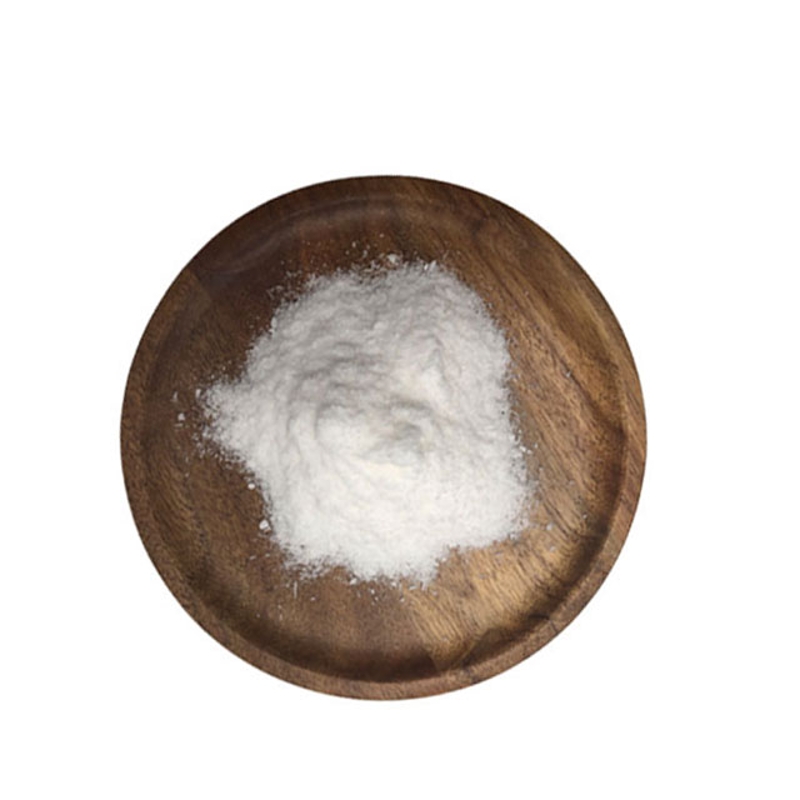Introduction to the U.S. Maternal and Child Nutrition Grant Program (WIC).
-
Last Update: 2020-10-23
-
Source: Internet
-
Author: User
Search more information of high quality chemicals, good prices and reliable suppliers, visit
www.echemi.com
. Introduction to theKong Yulin, a registered dietitian with the American Academy of Nutrition. Bachelor of Science in Biochemistry, Hong Kong University of Science and Technology, Master of Food Policy and Applied Nutrition, Tufts University, USA. He is currently the Secretary General of the Chinese Dietitian Group of the American Nutrition Society and director of the WIC/Nutrition Department of the Boston Chinese Medical Center. Opened the "American Registered Dietitian Kong Yulin" blog, microblogging and WeChat platform.. WIC is a U.S. federal and state-sponsored nutrition program that provides free nutrition and health education, health food counseling, and other services to low- and middle-income families. WIC provides health food, nutrition education, breastfeeding support and referral health care to eligible families free of charge. WIC stands for Wommen, Infants and Children, i.e. women, infants and children. The goal of WIC is to promote the nutritional health of pregnant women, breastfeeding women and children under five years of age.. WIC was born in 1972 as a pilot program and became a permanent public health program in 1974. WIC programs in all U.S. states are managed by the Federal Department of Agriculture's Food and Nutrition Service. WIC in most U.S. states gives free vouchers for participating families to receive nutritious food, and about 46,000 merchants across the country now receive WIC-issued food stamps.. Since the WIC of the U.S. states is independently managed by the state government, we take the Massachusetts WIC as an example to give you a specific introduction to all aspects of the WIC.. WIC clientseligible to participate in WIC must apply to the WIC in their resident state for membership, have a child under five years of age, a pregnant woman or a woman breastfeeding, and have a family income below the WIC's required standards.. WIC serves families of all kinds: married families, single-parent families, families with occupations and incomes, families without occupations and incomes, are part of our range of services. As long as you are the father, mother, grandparent, adoptive parent or legal guardian of a child under the age of five, you can apply for WIC services for a child in your home.. Families wishing to join the WIC must apply to the WIC in their resident state for membership. For example, only residents of Massachusetts are eligible to participate in the Massachusetts WIC, and foreign visitors or residents of other U.S. states are not eligible to apply for the Massachusetts WIC. It is important to note that WIC's eligibility is not subject to immigration status, and families who do not have legal immigration status but live in Massachusetts can also apply to participate in the Massachusetts WIC.. Household income levels for participating in the Massachusetts WIC must be below 185 percent of the Massachusetts poverty line. Income level refers to the total household income before tax.. WIC Program Health FoodsWIC provides free, healthy food to participating families. The monthly WIC Nutrition Package is designed to meet the special nutritional needs of low-income pregnant women, breastfeeding periods, non-breastfeeding postnatal women, infants and children to reduce the nutritional health risks of these groups. Influence participants' dietary quality and habits through WIC Nutritional Food Packs and Nutrition Education.. Each WIC participant received a personalized WIC Nutritional Food Pack after receiving a personal nutritional dietary consultation from a dietitian. The dietitian adjusts the WIC Nutritional Food Pack to maximize personal nutritional needs based on variables such as each participant's family history, medical history, lifestyle, cultural background, preference for food, and economic level.. The U.S. Department of Agriculture requires all WIC nutritional food packs for women and children in U.S. states to include the following nine basic food categories: . Milk . Cheese . Breakfast Cereals . Eggs . Vegetables and FruitsAll-wheat bread/whole grains . Canned fish . dried beans/peanut butter . juices All types of WIC nutritional foods are designed and selected by nutrition and medical experts with full consideration of food costs. These foods are common and common in all parts of the United States, are relatively inexpensive, and have very high nutritional value.. WIC strongly supports and encourages breastfeeding for infants under the age of one. Exclusively breastfed infants receive free baby food after six months until the age of one. For partially breastfed or full-formula-fed infants, the dietitian evaluates breastfeeding and distributes an appropriate amount of free formula. It is important to note that exclusively breastfed mothers have a lot more WIC nutritional food packs than partially or not.. This is a sample of monthly nutritional food packages designed by dietitians for pregnant and lactating mothers. The average pregnant mother's food bag is $63 (about 400 yuan) a month, and the average lactating mother's food bag is $75 (about 480 yuan) a month. Nutritional food packages for children under the age of five from beneficiary families average $53 (about 340 yuan) a month. . The WIC's breastfeeding support research shows that breast milk is the best food for your baby in the first year. Breastfeeding provides health, nutrition, economic and emotional benefits for both mother and baby. Since the main goal of WIC is to improve the nutritional status of infants and young children, WIC strongly encourages breastfeeding of infants. With the exception of a very small number of pregnant women suffering from non-breastfeeding-appropriate diseases, WIC has traditionally promoted breastfeeding as the best infant feeding option for all pregnant women. WIC supports breastfeeding in a variety of ways: WIC mothers who choose to breastfeed can obtain information through nutritional counseling and breastfeeding education materials. . Breastfeeding mothers are supported by WIC breastfeeding companion mothers. . Breastfeeding mothers can participate in WIC for one year after natal, while non-breastfeeding mothers can only participate in WIC for six months after natal. . The WIC Nutritional Food Pack for mothers who exclusively breastfed their babies has more food. . Breastfeeding mothers can receive breastfeeding tools such as breast pumps and nipple masks to help support the start and continuation of breastfeeding.
. . The effectiveness of WIC WIC can effectively improve the health of pregnant women, new mothers, and their babies. A 1990 study showed that women who participated in WIC and their newborns spent less on medical care during pregnancy than women who did not participate in WIC and their newborns. Pregnant women who participated in WIC also had fewer precoctic births, higher birth weights and lower infant mortality rates. Numerous studies have shown that WIC has significant public health benefits. . 1. The U.S. Department of Agriculture published a series of reports after analyzing WIC and Medicaid data for more than 100,000 babies born in 1988. The reports that for every $1 WIC benefit a woman receives during pregnancy, she reduces medical expenses by $1.77 to $3.13 within 60 days of birth. . WIC reduces the probability of a baby being born underweight by 1-3 percentage points (an average of 10.8% of families who qualify for WIC but do not participate in the WIC) WIC reduces the probability of premature birth by 2.8% 4-3.6 percentage points (on average, 14.2% probability of premature birth for families eligible for WIC but not WIC) WIC increased the length of pregnancy for pregnant women by an average of 1/4 to 1/2 weeks. . 2. WIC reduces the incidence of iron deficiency anaemia in children. The incidence of iron deficiency anaemia in the United States fell from 7.8 percent in 1975 to 2.9 percent in 1985, thanks largely to WIC and other public nutrition programs. . 3. WIC strengthened breastfeeding policies and support in the early 1990s, and between 1996 and 2001, the rate of breastfeeding by WIC mothers in the maternity room increased from 46.6 per cent to 58.2 per cent. The chances of infants breastfeeding at six months of age increased from 12.9 per cent to 20.8 per cent. . In order to promote the progress of China's nutrition improvement law, we will continue to publish other countries' experience in nutrition promotion, please pay attention to. . Zhu Xinya is Director of International Affairs of Nutrition Society of China, December 17, 2015 .
This article is an English version of an article which is originally in the Chinese language on echemi.com and is provided for information purposes only.
This website makes no representation or warranty of any kind, either expressed or implied, as to the accuracy, completeness ownership or reliability of
the article or any translations thereof. If you have any concerns or complaints relating to the article, please send an email, providing a detailed
description of the concern or complaint, to
service@echemi.com. A staff member will contact you within 5 working days. Once verified, infringing content
will be removed immediately.







